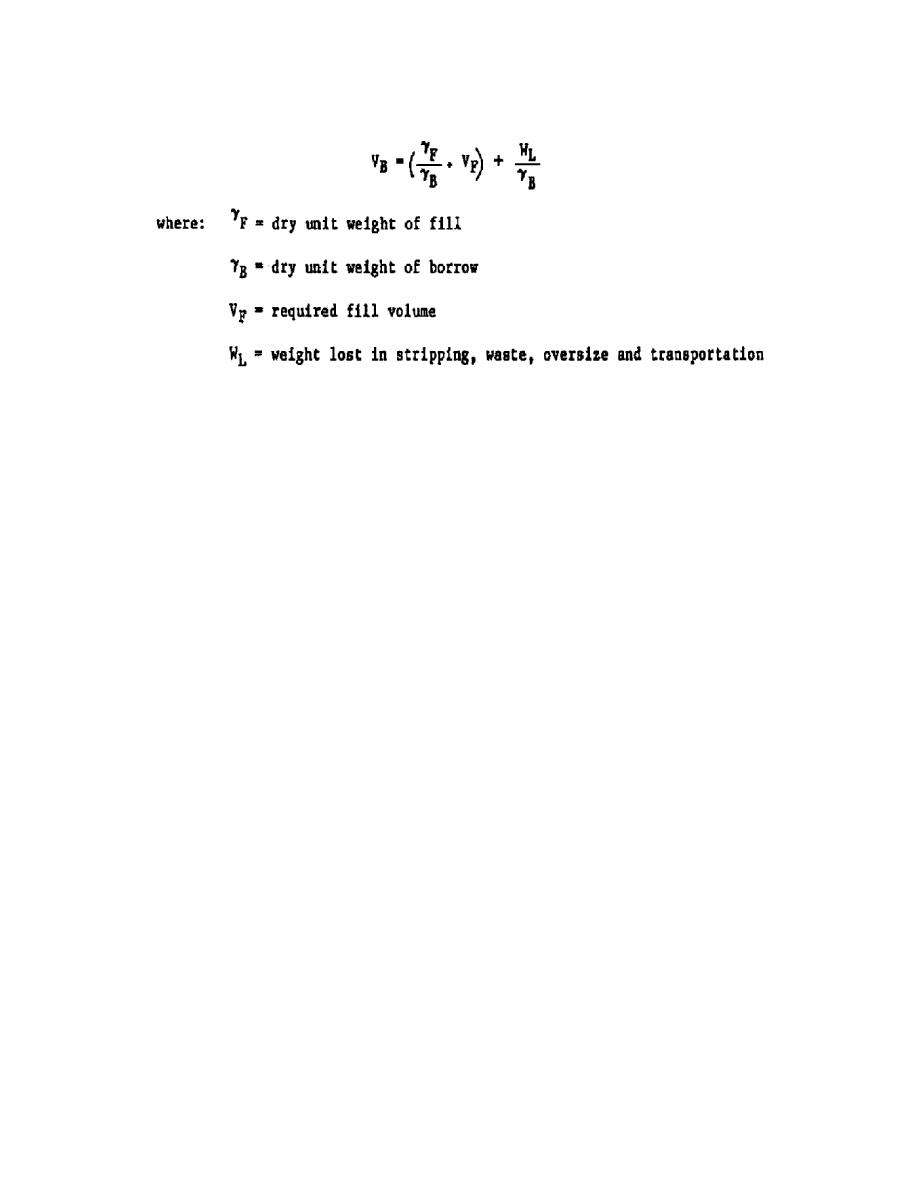
UFC 3-220-01N
15 AUGUST 2005
The volume of borrow soil required should be increased according to the volume
change indicated above. A "shrinkage" factor of 10 to 15 percent may be used for
estimating purposes. Note that a large percentage of cobble size material will increase
the waste, because sizes larger than 3 inches are generally excluded from compacted
fill.
Note the following for Rock Fill:
Maximum expansion ("swell") from in-situ conditions occurs in dense, hard
rock with fine fracture systems that breaks into uniform sizes. Unit volume
in a quarry will produce approximately 1.5 volumes in fill.
Minimum expansion occurs in porous, friable rock that breaks into broadly
graded sizes with numerous spalls and fines. Unit volume in quarry will
produce approximately 1.1 volumes in fill.
8-2
FILL
8-2.1
Types of Fill. Fills include conventional compacted fills; hydraulic fills;
and uncontrolled fills of soils or industrial and domestic wastes, such as ashes, slag,
chemical wastes, building rubble, and refuse. Properly placed compacted fill will be
more rigid and uniform and have greater strength than most natural soils. Hydraulic fills
may be compacted or uncompacted and are an economical means of providing fill over
large areas. Except when cohesionless materials, i.e., clean sands and gravels, are
placed under controlled conditions so silty pockets are avoided and are compacted as
they are placed, hydraulic fills will generally require some type of stabilization to ensure
adequate foundations.
Uncontrolled fills are likely to provide a variable bearing capacity and result in a non-
uniform settlement. They may contain injurious chemicals and, in some instances, may
be chemically active and generate gases that must be conducted away from the
structure. Subject foundations on fills of the second and third groups (and the first
group if not adequately compacted) to detailed investigations to determine their
8-31



 Previous Page
Previous Page
